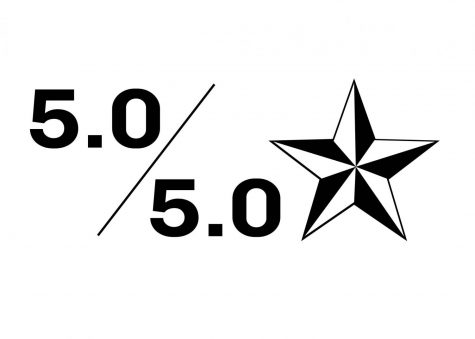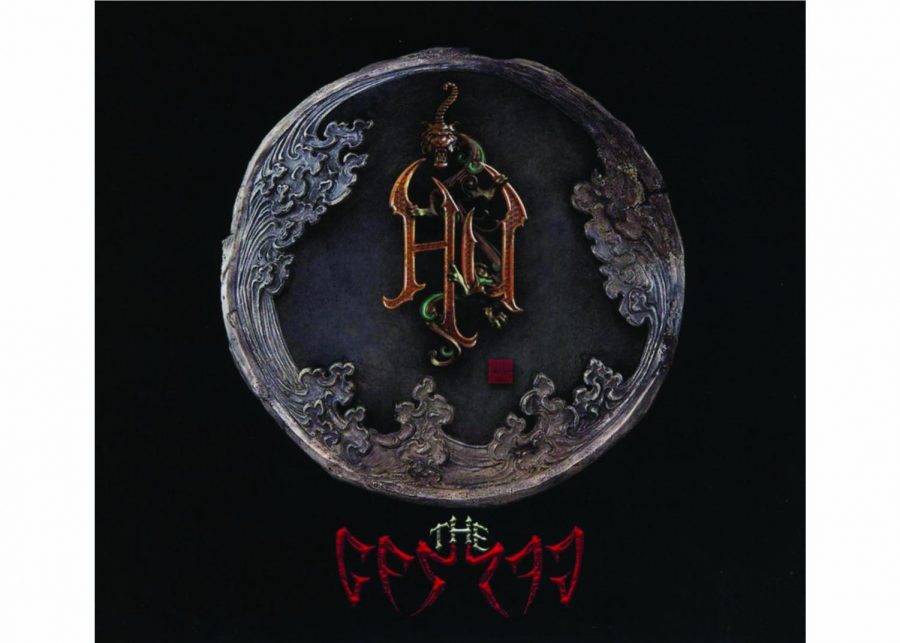Mongolian Metal Rising
Mongolian heavy metal band The HU conquers the world with new ‘The Gereg’ album
“The Gereg” by The HU. According to their website, the band has been working on this album since their founding in 2016. “Gereg” is a Mongolian word originating from Genghis Khan times. “Gereg” was apparently a diplomatic passport used during the Mongol Empire.
November 7, 2019
Mongolian heavy metal is probably a genre you haven’t been paying attention to. It sounds niche, to say the least, but that seems to be changing. Hailing from Mongolia as the name suggests, The HU has been taking the world by storm with their new album “The Gereg” with notable singles such as “Yuve Yuve Yu” and “Wolf Totem” having gained a lot of notoriety.
The HU is a band I have become completely fascinated by in the past months, having learned about them this summer and really listening to them at the beginning of this school year. Now, however, the band is actually becoming quite well known, reaching No. 1 on Billboard’s Heatseekers Albums chart and touring through the U.S. and many other countries.
So what is The HU and this “Mongolian heavy metal” that they play? Well, according to their website, the band describes themselves as a “band from Mongolia that blends heavy metal and traditional Mongolian throat singing.” The band was founded in 2016 in Mongolia and “The Gereg” released this year is their debut album.
The band’s name, “The HU,” is apparently derived from the Mongolian root word for human being. Describing their music as “Hunnu rock,” the Hunnu being the Mongolian empire we know as the Huns, the band uses many aspects of traditional Mongolian culture in their music, such as traditional Mongolian poetry, battle cries, instruments and themes.
The band is made of four members: Gala, Enkush, Jaya, and Temka. Each member employs a traditional Mongolian instrument. Gala is the lead throat singer, but he also plays the morin khuur, a two-stringed instrument played upright with a bow. This instrument is also called the horsehead fiddle. Enkush is the lead morin khuur player and also throat sings. Jaya throat sings, but also plays the most instruments, playing the flute, the tsuur, a flute-like instrument, and the jaw harp. Temka plays the tovshuur, a member of the lute family. According to their website, all of the members have at least a Bachelor’s or higher degree in music.
The band blends these rather unique instruments with various aspects of Western rock, such as heavy drums and bass, creating a simultaneously familiar and foreign type of music that I find very intriguing.
One thing I would like to clarify before really diving into the album itself is the classification of “Mongolian heavy metal” that myself and many others throw around. Many times I would show one of The HU’s songs to someone to get the response, “that’s not really heavy metal, is it?” The term “Mongolian heavy metal” is not quite accurate, or at least misleading. For many people, that term implies heavy metal, that happens to be made by Mongolians. So when these people hear The HU, they’re rightfully confused as there isn’t any guitar shredding or “screaming,” the common image of heavy metal. Instead, the term leans more heavily on the Mongolian aspect. The HU is a fusion of some aspects of heavy metal with the emphasis being on Mongolian music. The album in question, “The Gereg,” is an album rich with cultural beauty simply made more accessible to Western ears familiar with hard rock.
Now on to the album. I’m going to spoil the end of this review, I think this album is a masterpiece. Five out of five. No question. I’ve listened to the entire album over and over countless times and love every minute each time. This isn’t as much a review as an exhibition. I want to take this music I find special and show it to more people, and so you’ll find this less of a critique of and more an argument for. I’ll still list some grievances I have, as few as I have, but I’ll more be discussing this album in terms of new listeners and how they might react to it.
The first thing I noticed listening to many of the songs on this album is that the band has mastered balancing intense jams with subdued almost spiritual instrumentation. Using woodwind instruments and a softer side of the Morin Khuur, the band expertly transitioned from headbanging intensity to elevated spirituality. Listening to the album is a real experience.
The album certainly has some great tracks when it comes to harsh, intense battle chants. The songs “Shoog Shoog,” “Wolf Totem,” and the title track “The Gereg” are all really intense and more metallic in nature, evoking images of a battlefield and impending combat. These songs are really good at getting you pumped and motivated, great for when you need to get work done or conquer all of Eurasia. Tracks like these used their traditional instruments and the drums and bass of rock as well as much harsher and more rasping throat singing to add to the intensity and it worked very well. Also, the band used actual battle cries from Mongolian culture to achieve this. Very effective head-bangers.
However, I think the strongest songs were the ones that were more subdued, that were more beautiful than intense jams. Some of my favorites of the album are “Shireg Shireg,” “The Legend of Mother Swan,” and “Song of Women.” These tracks all emphasized the spiritual significance of Mongolian music within its culture. Opting to tell a beautiful story (which you can only appreciate after looking up the lyrics in English) with beautiful use of the Morin Khuur and woodwind to instead evoke the image of nature and bonfires. “The Legend of Mother Swan” tells a fairy-tale about the titular Mother Swan, and how she protected her young from the coming winter at the cost of her own life, a tragic yet beautiful piece of poetry, the likes of which we don’t associate with heavy metal. Hell, “Song of Women” is just a whole song singing the praises of the feminine side of Mongolian culture, praising the maternal energy of Mongolia herself. This album reminds us of the stories that can be expressed through music.
For those who listen to the album, though, I do not doubt one song, in particular, will be a favorite. “Yuve Yuve Yu” is the song that made the band known, and is hands down their most accessible song. With an upbeat tone and a tendency towards more familiar instrumentals, it’s the song they’re most known for. Interestingly, this song is a giant condemnation of current Mongolian leadership as a whole for keeping Mongolia as a shadow of its former self.
All in all, I think that the album succeeds on a fundamental level of providing raw intensity and melodic beauty in equal and not conflicting measures. I’d recommend the album on the basis of just experiencing another culture we don’t get to interact with often, but the transcendental music is a huge bonus.
One of my new favorite albums, it’s no surprise that “The Gereg” gets a perfect score from me.

